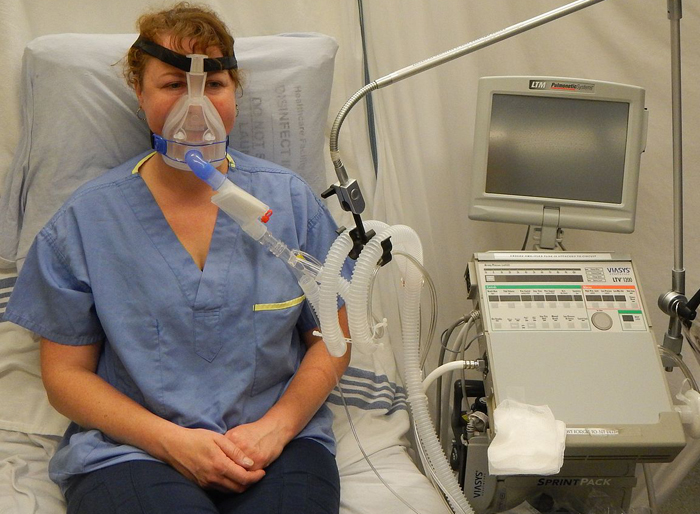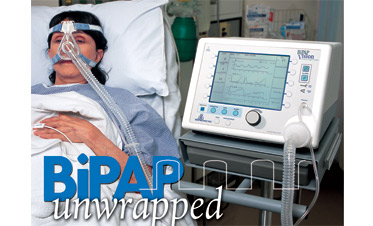Vital Tips for Choosing a BiPAP Rental Service
Vital Tips for Choosing a BiPAP Rental Service
Blog Article
Bipap vs. CPAP: Which Is the very best for Your Rest Condition?
When navigating the complexities of rest conditions, the selection between BiPAP and CPAP treatment is an important factor to consider. Each modality provides unique advantages customized to particular conditions, yet the choice pivots on private client needs and comfort levels. While CPAP offers a constant air movement suitable for obstructive rest apnea, BiPAP's double pressure setups might enhance comfort for those with more intricate respiratory problems. Recognizing these differences can substantially impact treatment effectiveness, leaving one to ponder which choice genuinely lines up with their health requirements and way of living.
Understanding Rest Disorders
Rest problems include a variety of problems that interrupt typical rest patterns, impacting both the high quality and period of remainder. These disorders can materialize in different types, including sleeping disorders, sleep apnea, narcolepsy, uneasy leg syndrome, and parasomnias. Each condition offers special challenges, often bring about significant daytime fatigue, cognitive disability, and emotional disruptions.
Sleeplessness is characterized by problem dropping or staying asleep, while sleep apnea involves repeated interruptions in breathing during rest, typically bring about fragmented rest. Narcolepsy, on the various other hand, is marked by too much daytime sleepiness and unexpected rest strikes. Troubled leg disorder creates awkward experiences in the legs, triggering an irrepressible urge to move them, which can likewise impede the capacity to drop asleep.
The influence of sleep conditions extends beyond specific health and wellness, affecting total performance, connections, and top quality of life. Recognizing the certain nature of each condition is essential for efficient medical diagnosis and therapy. As rest health comes to be progressively identified as a vital component of general health, addressing these disorders is necessary for enhancing both sleep quality and daily functioning.
Exactly How CPAP Works
Constant Positive Airway Pressure (CPAP) treatment is regularly used as a key treatment for obstructive rest apnea (OSA) The mechanism of CPAP includes using a maker that delivers a consistent stream of air through a mask put on during sleep. This air movement preserves favorable stress in the respiratory tract, protecting against the collapse or obstruction of the throat that can take place during sleep.
When an individual takes a breath in, the CPAP maker offers a continuous flow of air, making certain that the airway remains open - BiPAP Rental. This not only eases the signs of OSA, such as snoring and interrupted sleep patterns, but likewise minimizes the associated health and wellness dangers, including cardio complications and daytime fatigue
The pressure setups on a CPAP machine can be tailored to meet individual patient needs, commonly figured out via a sleep study. Generally, CPAP treatment has been revealed to dramatically improve the quality of rest and overall health for people enduring from obstructive sleep apnea.
Just How BiPAP Functions
BiPAP, or Bilevel Positive Respiratory Tract Pressure, is a specialized type of non-invasive air flow that is specifically valuable for patients with conditions such as complex sleep apnea or respiratory system problems. Unlike CPAP, which provides a continual stream of air at a single stress, BiPAP provides two unique stress settings: a higher inspiratory pressure for breathing and a lower expiratory pressure for exhalation. This dual-pressure approach enables much easier breathing, lowering the effort required throughout exhalation.
The gadget operates with a mask fitted over the nose or mouth, connected to an equipment that creates atmospheric pressure. When the person inhales, the machine supplies the greater pressure to assist with airflow, making sure that the airway remains open. Upon exhalation, the device instantly decreases the stress, making it extra comfortable for the individual to take a breath out.

Secret Distinctions In Between BiPAP and CPAP

In comparison, BiPAP (Bilevel Favorable Airway Stress) supplies 2 various pressure setups: one for breathing and a reduced one for exhalation. This double stress system permits more comfortable breathing, especially for clients that fight with exhaling versus a constant pressure. BiPAP is frequently recommended for individuals with complicated rest apnea, persistent obstructive lung condition (COPD), or those that call for additional support navigate to this website throughout rest.
In addition, the complexity of BiPAP devices commonly results in a greater expense and requires a lot more careful titration than CPAP. BiPAP Rental. Recognizing these vital differences can aid in identifying which device may be better for particular rest conditions, setting the foundation for enlightened therapy choices
Picking the Right Treatment
Exactly how can one figure out one of the most suitable treatment for taking care of sleep problems? The choice between BiPAP and CPAP therapy largely hinges on the specific features of the sleep disorder, the patient's general health and wellness, and their comfort with the tool. CPAP, which delivers a continuous stream of air, is generally prescribed for obstructive sleep apnea (OSA) It maintains an open airway throughout sleep, efficiently avoiding hypopneas and apneas.
Conversely, BiPAP gives 2 degrees of pressure: one for inhalation and a lower one for exhalation. This twin pressure system is valuable for patients with complex rest apnea or those that experience problem breathing out against a continuous pressure. Additionally, BiPAP is commonly advised for individuals with respiratory conditions, such as persistent obstructive pulmonary illness (COPD), where differing pressure settings can boost comfort and compliance.
Eventually, a complete assessment by a sleep expert, consisting of a rest research study, can assist establish which treatment straightens ideal with the individual's requirements. Aspects such as convenience, simplicity of use, and certain clinical problems must additionally be taken right into factor to consider to maximize treatment end results.
Final Thought
In recap, both BiPAP and CPAP offer distinctive objectives in the administration of rest problems. CPAP is efficient for obstructive sleep apnea via constant air movement, while BiPAP offers double stress settings that Visit This Link improve convenience for those with intricate sleep apnea or respiratory system problems. The option between these treatments should be led by specific needs and conditions, necessitating a thorough analysis by a sleep specialist to ensure optimum therapy end results and enhanced high quality of rest.

On the whole, CPAP treatment has been shown to considerably improve the quality of sleep and total health for individuals experiencing from obstructive sleep apnea.
BiPAP is often suggested for patients with complex rest apnea, chronic obstructive lung disease (COPD), or those that need extra assistance during sleep.
CPAP is effective for obstructive rest apnea through consistent air movement, while BiPAP provides double stress setups that improve comfort for those with complex sleep apnea or breathing issues.
Report this page